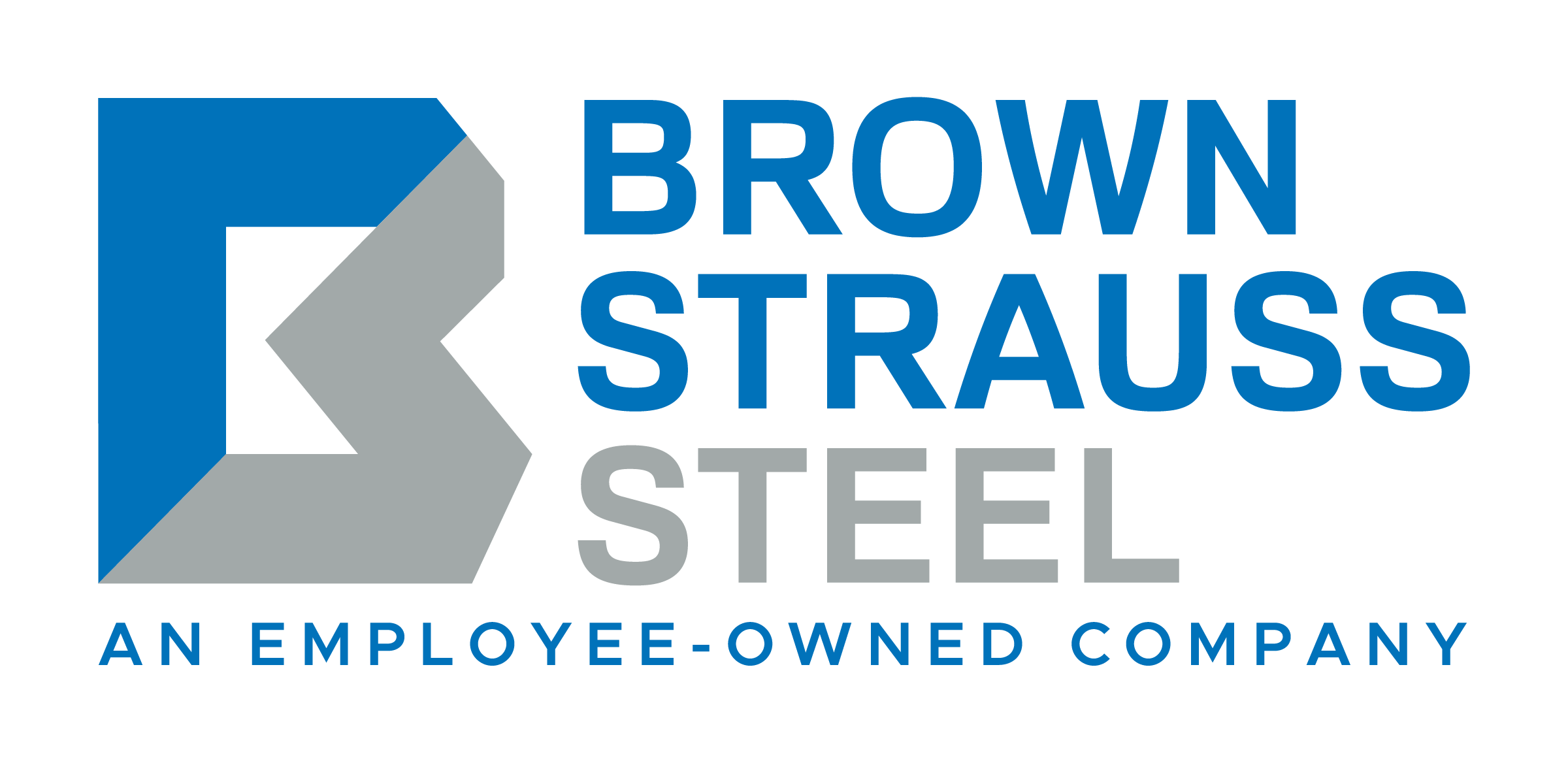In the construction and architectural industry, few materials hold as much significance as structural steel. It is an alloy of iron and carbon, fortified with small amounts of other elements like manganese, phosphorus, sulfur, and silicon. Its unique composition provides it with exceptional properties that make it an indispensable component of countless iconic structures worldwide.
At Brown Strauss, we pride ourselves on being the go-to destination for all your structural steel needs. With over a century of experience, we have honed our expertise to perfection, making us leaders in the industry. We are committed to providing top-tier steel solutions from our extensive inventory, tailored to meet the unique needs of our clients.
Key Properties of Structural Steel
Structural steel possesses a wide range of properties that make it a popular and versatile material in the construction industry:
- Strength: Known for its exceptional strength-to-weight ratio, structural steel can withstand heavy loads and is ideal for supporting large structures.
- Durability: This construction material can withstand wear and tear and harsh weather conditions, making it suitable for long-lasting outdoor structures.
- Ductility: One unique characteristic of structural steel is that it can deform under stress before reaching its breaking point. This allows it to absorb energy during extreme conditions — such as earthquakes — without collapsing immediately, enhancing the safety of structures and their occupants.
- Flexibility: This material can be easily molded and shaped into various forms, allowing architects and engineers to create innovative and complex designs.
- Fire resistance: Although steel is not fireproof, it retains its strength and integrity at high temperatures, making it a preferred choice for fire-resistant structures.
- Cost-effective: Structural steel is known for its durability, ease of fabrication, and quick assembly. This helps reduce construction time, labor, and maintenance expenses over the structure’s lifetime.
Structural Steel Applications in Diverse Structures
The adaptability of steel makes it the material of choice for a wide array of structures, each with its unique set of challenges and requirements:
- Skyscrapers: Steel frames provide the necessary strength to support the immense weight of these structures, allowing architects to design awe-inspiring buildings that dominate city skylines.
- Bridges: Structural steel plays a vital role in bridge construction, boasting incredible strength and flexibility. Its durability and ability to withstand heavy loads also ensure the safe passage of vehicles and pedestrians.
- Industrial facilities: From factories to warehouses, industrial facilities rely on the robustness of structural steel to support heavy machinery and equipment. This material provides the required stability and open spaces necessary for streamlined operations.
- Residential buildings: Steel frames provide a strong and stable foundation for houses and apartment complexes. Their lightweight nature simplifies construction processes and reduces the load on foundations, making them an efficient choice for residential projects.
- Sports arenas and auditoriums: The strength of steel allows for the construction of vast roof spans, covering large areas without excessive support columns. It also provides the necessary framework for seating arrangements, ensuring unobstructed views for spectators.
Advancements in Structural Steel Technology
Several technological advancements and solutions have propelled structural steel to the forefront of modern construction practices. Here are some of them:
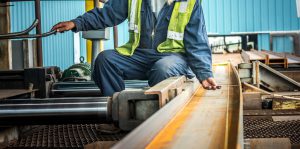
Computer-Aided Design (CAD) and Building Information Modeling (BIM)
Integrating CAD and BIM technologies has revolutionized the design and planning phases of construction projects. Architects and engineers can now create intricate and precise 3D models of structures, enabling them to visualize and analyze every detail. For structural steel, this means accurate modeling of components, ensuring seamless integration and optimal use of materials.
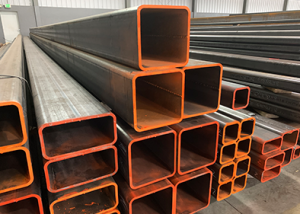
Computer Numerical Control (CNC) Machining and Robotics
CNC machining and robotic technologies have transformed the manufacturing process of structural steel components. CNC machines offer high precision to create intricate cuts and welds, ensuring that each piece of steel meets exact specifications. Meanwhile, robots enhance efficiency in tasks such as welding, assembly, and material handling. These advancements have not only improved the quality of the material but also reduced production time, leading to faster project completion.
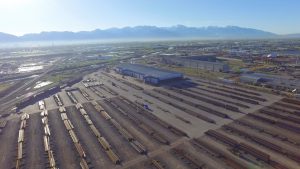
High-Performance Coatings and Treatments
The development of high-performance coatings and treatments has significantly enhanced the durability and corrosion resistance of structural steel. Advanced coatings — such as zinc-based compounds and epoxy paints — provide an additional layer of protection. These extend the material’s lifespan while ensuring that it maintains its integrity even in harsh environmental conditions.
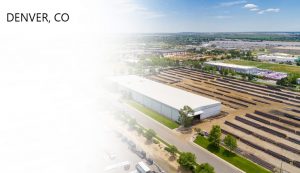
Prefabrication and Modular Construction
Prefabrication and modular construction techniques have streamlined the assembly process of structural steel components. Parts can now be fabricated off-site, ensuring high-quality standards and minimizing on-site construction time. Prefabrication also reduces material wastage, making construction projects more environmentally friendly. On the other hand, modular construction — which involves assembling pre-made modules on-site — allows for rapid construction of buildings. This leads to faster occupancy and reduces overall project costs.
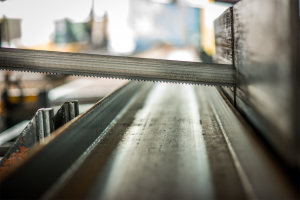
3D Printing and Additive Manufacturing
Additive manufacturing techniques enable the creation of intricate and customized parts, which helps reduce material wastage and production time. This innovation opens up new possibilities for detailed and innovative architectural designs. One example of this process is 3D printing, which allows for the fabrication of complex steel components layer by layer.
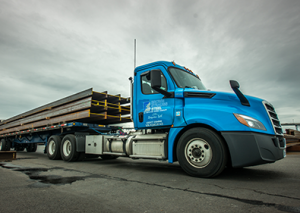
Digital Twin Technology
This innovation involves creating a digital replica of a physical structure, allowing real-time monitoring and analysis. By harnessing data analytics and sensor technologies, construction experts can make informed decisions to ensure the safety and longevity of structures. In the context of steel, digital twins enable engineers to assess the performance of components, track structural integrity, and predict maintenance needs.
Going Green With Structural Steel
Today, sustainable construction practices are becoming increasingly important. Thanks to its environmental benefits, structural steel has emerged as a frontrunner in this area. Here’s why it is an ideal choice for green building initiatives:
Recyclability
Steel can be recycled endlessly without losing its strength and quality. This property drastically reduces the demand for new raw materials, conserving valuable resources and reducing the environmental impact associated with mining and extraction.
Energy Efficiency
A structural steel building can be designed to maximize energy use. It allows for integrating various insulation materials, ensuring superior thermal performance. This reduces the need for excessive heating, cooling, and lighting, decreasing energy consumption over the building’s lifetime.
Minimal Waste Generation
New structural steel manufacturing techniques help minimize on-site construction waste. For instance, off-site fabrication and modular techniques ensure that components are tailored accurately to project specifications. This eliminates the need for on-site modifications and leads to a reduction in waste generation.
High Life Cycle Analysis (LCA)
An LCA evaluates a building material’s environmental impact throughout its entire life cycle — from raw material extraction to disposal. Structural steel consistently demonstrates favorable LCA results, showcasing its minimal environmental impact compared to other materials.
Reduced Carbon Emissions
The benefits mentioned above collectively contribute to making structural steel have a lower carbon footprint than many other construction materials. Its production processes are optimized to minimize energy consumption, resulting in significantly fewer greenhouse gas emissions.
Brown Strauss: Your Trusted Source for Structural Steel
As structural steel becomes a favored material in the construction sector, choosing the right supplier for your needs is crucial. Brown Strauss — the premier structural steel service center in the United States — stands ready to fulfill your requirements with unmatched expertise and efficiency! We are a proud member of the Metals Service Center Institute and the American Institute of Steel Construction, showcasing our commitment to upholding industry standards.
With over 120,000 tons of stock for next-day delivery, we can guarantee that you will receive the materials you need for your projects to proceed seamlessly. Our ten strategically located facilities, spanning 24 states, also ensure prompt and reliable service.
today to take the next step toward a successful construction project!
